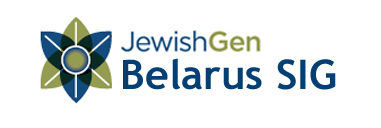An Intelligent Layman's Guide to
Viewing Landsmenshaften, Benevolent Societies, and Burial Societies
by Jerry Seligsohn
It is unfortunate that the archivist finds that the records passed on to YIVO Archives generally miss the early activities of these organizations.
Often we only see the last few years of the society when their role has lessened to those of a burial society.
The minutes are kept in English and Yiddish becomes the mother tongue of the elderly members.
Gone is the landsmanshaft personal doctor replaced by Medicare and job medical insurance.
Endowments for illness disappear and loans to needy members become a thing of the past.
Even the ladyís auxiliary no longer functions.
We struggle to remember when the landsmanshaft was often the glue that kept Jewish people together in a strange new world.
Yiddish and Yiddishkeit could be exercised outside of the home and the local neighborhood.
Bar Mitzvahs and weddings were shared. Extensive socializations took place.
Perhaps matches between the sons and daughters were forged. Relatives who lived in other neighborhoods could be greeted.
Our progress has taken away a valuable way of life
The art of reconstructing relationships from membership lists can be matters for speculation.
If we can determine ages from data we can assume that people of similar ages would be open to mutual socialization.
Where names repeat [especially those that are out of the ordinary] we may conjecture possible family connections
The recording of memory lists, cemetery burial maps, and death certificates are invaluable to the family seeker.
They are usually accompanied by dates of death leading us to posit whether they might have come here from Europe.
Crosschecking these names on the Ellis Island Data Base could be helpful. Death certificates give dates of birth and death, mother and fatherís names, country of origin, and the address of the last residence.
Dues accountings are usually found in ledgers. They are organized either by date or by name.
When listed by date the names are placed on the left side and the dues and paybacks follow in columns.
I find this invaluable when I list names for the Belarus website as I Xerox the list for typing at home.
When names are given an entire page or two one gets a historical perspective of the individual.
This often comes with an address [or two or three as they move on or away], a telephone number and a grave reservation.
This amateur archivistís favorite is the Souvenir Journal. Of course we may relish the membership list, usually in English and often replete with full addresses.
The advertisements lend a flavor to earlier times which captures the essence of the
period. Memorial lists, for some reason, are usually written in Yiddish which gives you a triple excursion in transliteration: from the nation of origin to the English of Ellis Island: from the legal English of New York to the Yiddish of the anniversary journal: and from the journal to you the reader putting it back into English.
Please do not be foolhardy enough to claim that you have the correct spelling after so many transformations.
One last thought: in that great Hadassah in the sky there must be much gnashing of teeth as the women members often see their first names recorded in our web site lists as initials while the male members get the full treatment ! Golde, will you ever forgive the record keepers?
© 2004
Belarus SIG
